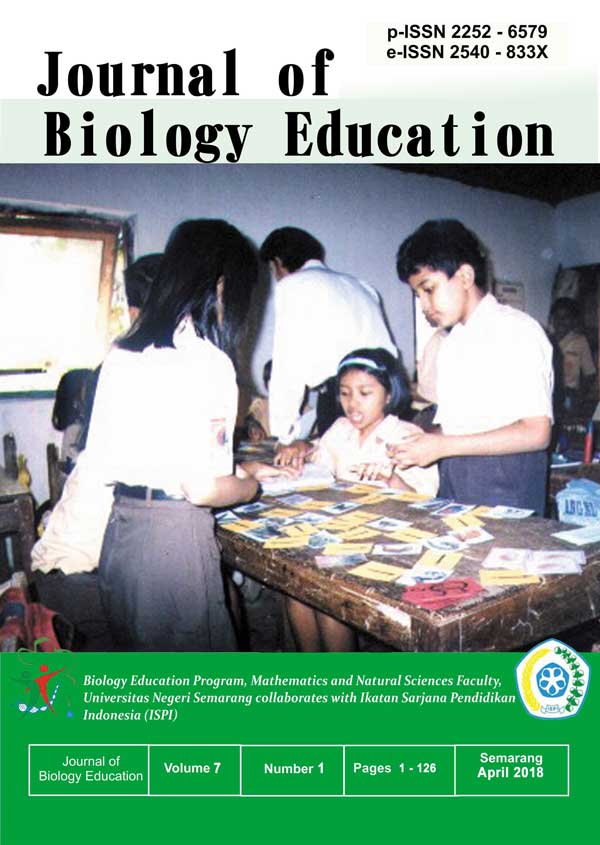Effect of Kalibanger River Utilization as a Learning Source of Environmental Pollution in Junior High School 5 Pekalongan
Abstract
Natural Science is the study of the phenomenon that occurs in the student environment. Directly oriented learning in the student environment makes learning meaningful because students can see the real object being studied. Based on the observations in SMP Negeri 5 Pekalongan, learning activity has not utilized the environment as a learning source. Whereas the location of the school near the appropriate learning sources to study environmental pollution material. Student learning outcomes are less than optimal and students tend to be passive. Therefore, variations are made in the learning by utilizing the Kalibanger River as a source of learning environmental about environment pollution. The method used in this research is quasi experimental design type nonequivalent control group design. Determination of the sample is done by purposive sampling technique and used as experimental class is class VII F and control class is class VII D. Student retrieval data using test instrument, while student activity is taken from observation sheet and questionnaire. Learning result data obtained by posttest value is higher than pretest. Increased learning results occur due to learning activities undertaken by students. Recapitulation of experimental class student activity is 87,9% which belong to very active criteria. Based on the results of t-test calculation obtained t-count = 3.323> 2.040 so H1 accepted, it can be concluded learning Kalibanger river utilization as a source of learning about environmental pollution can increase the activity and learning outcomes of students of SMP Negeri 5 Pekalongan.
The copyright of the article once it is accepted for publication shall be assigned to the journal as the publisher. The intended copyright includes the right to publish the article in various forms (including reprints). The journal maintains the publishing rights to the published articles.
This work is licensed under a Creative Commons Attribution 4.0 International License.








